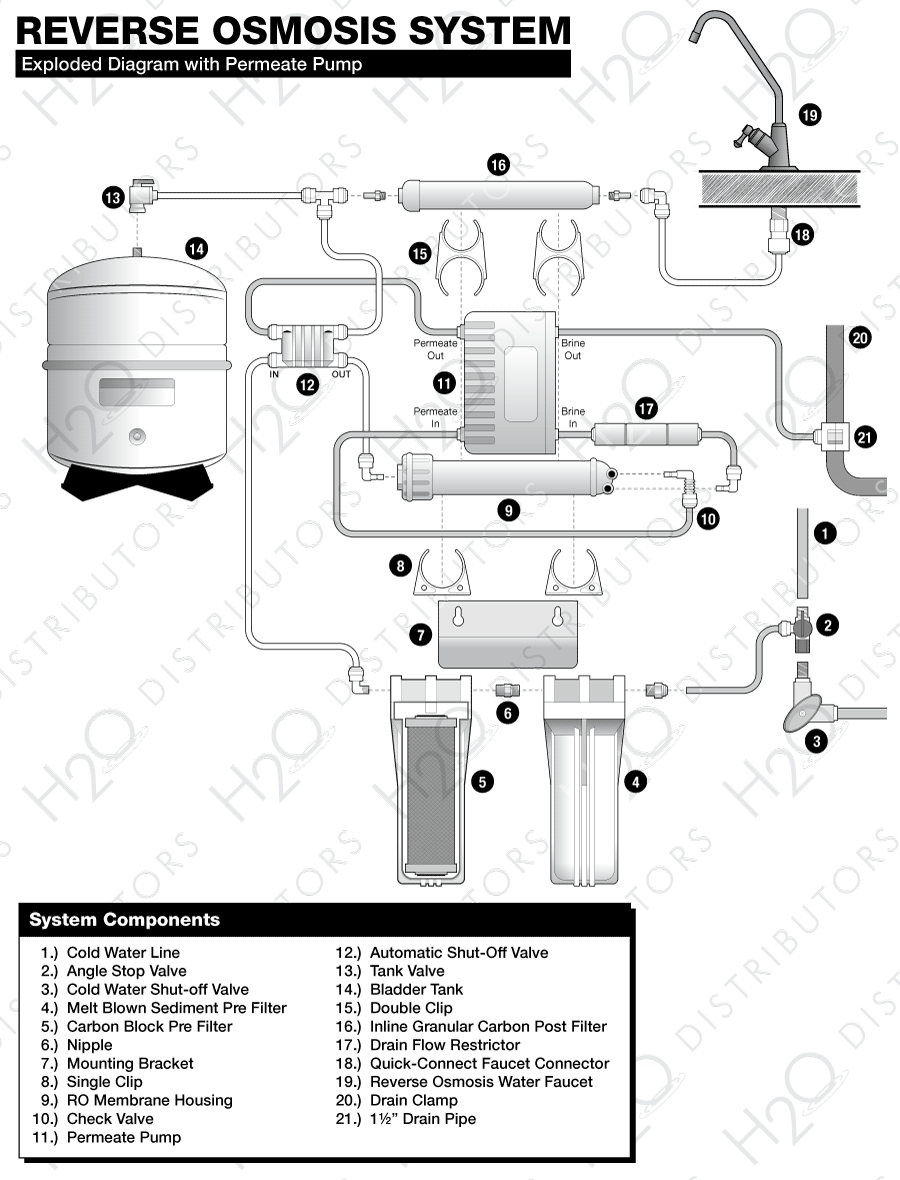Hello, I bought an Ispring RO system (RCC7P-AK) with a tank and booster pump. Installed it and everything is running well. Though I had read how a permeate pump improves your system in a few ways so I bought the ERP500 pump but I'm unsure how to install it. I understand the brine in and brine out ports and how to hook that up.
Where I'm confused is the permeate in and out ports on the pump. Currently my RO membrane permeate out goes to an inline check valve, then to a high pressure switch to some post filters and the tank. Do I take the tube that comes out of the high pressure switch and put that into the permeate in?
And do I need the ASV? Can someone explain why it is or isn’t needed for my system? I do have the ASV-ERP-JG just don't understand it fully.
Thank you!
Where I'm confused is the permeate in and out ports on the pump. Currently my RO membrane permeate out goes to an inline check valve, then to a high pressure switch to some post filters and the tank. Do I take the tube that comes out of the high pressure switch and put that into the permeate in?
And do I need the ASV? Can someone explain why it is or isn’t needed for my system? I do have the ASV-ERP-JG just don't understand it fully.
Thank you!

